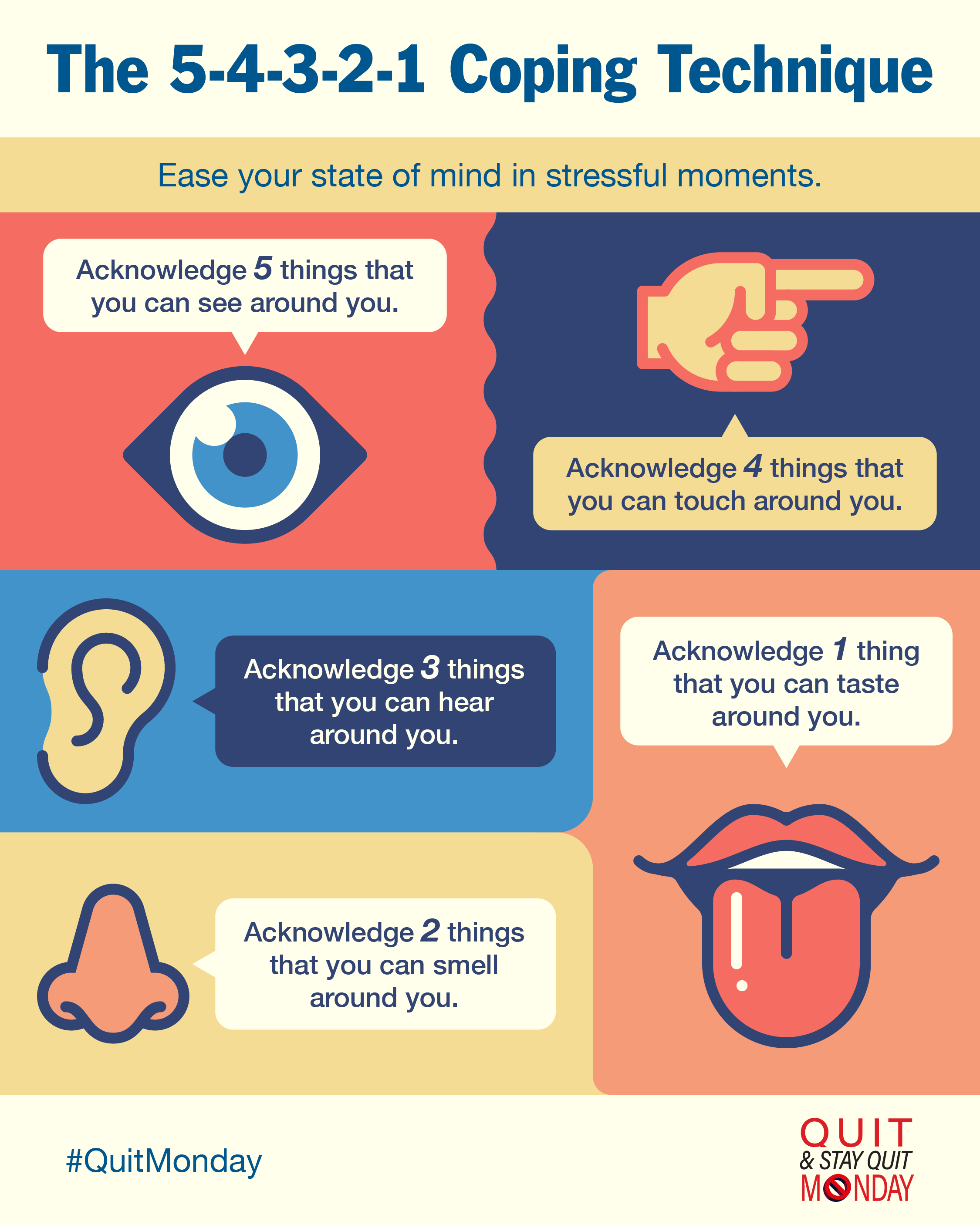Use the 5-4-3-2-1 Coping Technique for Stress Relief Without Smoke
Throughout the day, stressful situations will inevitably occur; they’re simply part of the human experience, but you don’t have to let these moments dictate your behavior or emotions. For smokers, reaching for a cigarette is a common response to stress, but by preparing yourself to deal with these situations in advance, you won’t need to rely on harmful and unhealthy forms of temporary relief.
That’s where the 5-4-3-2-1 Coping Technique comes into play. The practice is designed to ease your mind so that you can maneuver through stressful situations. The 5-4-3-2-1 Coping Technique uses all five of your senses to bring greater focus and awareness to the current moment and your surroundings. By shifting your attention away from the stressful experience, you can clear your mind and work on productive solutions to remedy the root cause of the stress.
Starting is simple: Take deep, slow, and long breaths before proceeding to the following steps:
5. SEE: Acknowledge five things that you can see around you. Options can range from a pen or stapler at your desk to a bird or tree outside your window. You can look at a family photo on the wall or a glass of water on the kitchen counter. The choice is yours – pick between big and small items to keep your options open.
4. TOUCH: Acknowledge four things that you can touch around you. You can start with your hair, hands, elbows, and other parts of your body if you’re short on time. The ground beneath your feet, whether it’s the floor of your bedroom or the office at work. Pillows, desks, phones, and keyboards can also be used to satisfy this step.
3. HEAR: Acknowledge three things you can hear around you. Instead of listening to your own thoughts or sounds from your body like your stomach growling, focus on external noises. Examples include someone driving a car nearby, a clock ticking, or a dog barking.
2. SMELL: Acknowledge two things around you that you can smell. This step may be a challenge compared to the others, so it’s best to go to a place with more sources of scent if you don’t smell anything wherever you are at the moment. The outdoors has plenty of options for smells, and the soap in bathrooms also helps. When home, your furniture can provide some pleasant smells, too.
1. TASTE: Acknowledge one thing around you that you can taste. It doesn’t necessarily have to be food, as toothpaste and minty floss you use in the morning or at night are easy sources. You can also go with the cinnamon-raisin oatmeal you have for breakfast, the sandwich and chips you have for lunch, or the pasta primavera you have for dinner. Even your daily beverages give you an opportunity to experience taste.
End this exercise with a long, deep breath.
